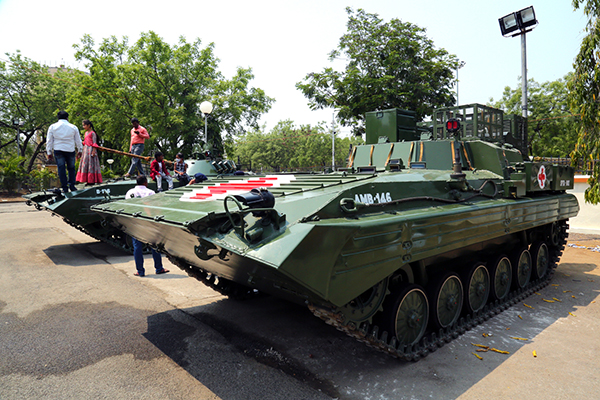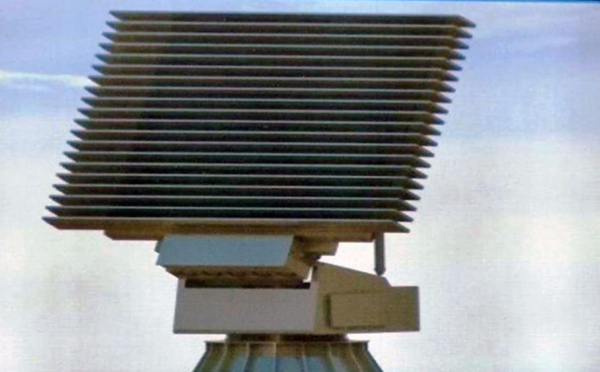
Defence Minister Urges OEMs to ‘Make In India’
In an address at the annual convention of the Federation of Indian Chambers of Commerce and Industry (FICCI), Defence Minister Rajnath Singh said, on 18 December, that India has very clearly conveyed to the US, Russia, France and many of its partner countries that military platforms and equipment required by the Indian armed forces to deal with myriad security challenges have to be manufactured in the country.
“We have told every friendly country that we want to produce the military platforms, weapons and ammunition in India itself keeping in mind the security of the country,” he said.
“We have conveyed this message to the US, Russia, France and others as well and we do not hesitate to communicate this message,” he added.
The defence minister said the message to the countries producing military equipment has been that: “Come Make In India, Come Make for India and Come Make for the world”.
Singh said, following his talks with French Defence Minister Florence Parly on 17 December, it was agreed that a major French company will produce “an engine” in India by joining hands with an Indian company under the strategic partnership model. He, however, did not elaborate.
The defence minister also referred to the government’s decision to not import 209 military equipment under a staggered timeline to promote the domestic defence industry and indicated that the items under the list may touch 1,000.
“When I talk about ‘India Beyond 75’, I believe that this ‘positive list’ will be around 1000 items in this decade. I am very positive about this,” he said.
The defence minister also talked about the need for “fair competition” between private and public sector companies and described the corporatisation of the over 200-year-old Ordnance Factory Board as the biggest reform in the defence sector after Independence.
“At present, India’s defence and aerospace manufacturing market is worth Rs 85,000 crores. I believe it will increase to one lakh crore in 2022,” he said.
In August last year, Singh announced that India will stop the import of 101 weapons and military platforms like transport aircraft, light combat helicopters, conventional submarines, cruise missiles and sonar systems by 2024.
A second list, putting import restrictions on 108 military weapons and systems such as next-generation corvettes, airborne early warning systems, tank engines and radars, was issued a few months later.
In May last year, the government announced increasing the FDI limit from 49 per cent to 74 per cent under the automatic route in the defence sector.
Ordnance Factory Medak Developing New Combat Vehicles
The Ordnance Factory Medak (OFMK) is developing two modern command and control modern vehicles for both the artillery and the infantry wings of the Indian Army with the CCPTV or Command Control Post Tracked Vehicle for the former already undergoing trials and is likely to be inducted within a few months, said General Manager Alok Prasad on 13 December.
The Command Combat Vehicle for the infantry is in the developing stage as also a special Armed Vehicle Track – Night Recovery for the Corps of Electronics and Mechanical Engineers (EME) wing.
The upgradation of the BMP armoured vehicle too is underway, he said, while announcing the launch of the exhibition of the factory products.
OFMK is geared for making the ‘Namica’ – launch vehicle for Nag, futuristic combat vehicles and vehicles with night vision capabilities, armed engineering reconnaissance vehicles and the likes.
The launch vehicle for the Pinaki missile is also manufactured by them.
MBDA Fined for Delay in Offset Obligations
Five years after India signed an agreement with France to procure 36 Rafale jets at a cost of Rs 59,000 crore, the Ministry of Defence (MoD) made European missile maker MBDA pay a fine of nearly 1 million euros (around Rs 8.5 crore) for delay in fulfilling its offset obligations.
French aerospace major Dassault Aviation manufactures the jets, while MBDA supplies their missile systems. Both companies have been under scrutiny ever since the Comptroller and Auditor General (CAG) tabled its report on the Management of Defence Offsets in Parliament last year. The national auditor had called out the two firms for not honouring the offset clause of offering high technology to India under the Rafale deal. As per the agreement, 50 per cent of the total contract value has to be reinvested in India as offsets between September 2019 and September 2022. This compensatory clause is aimed at giving a boost to ‘Make in India’ in the defence sector, primarily through transfer of technology.
The MoD’s stern action is expected to send out a clear message to foreign firms — fulfill your offset obligations or pay a hefty fine. However, the country needs to firm up its offset policy to make foreign defence entities do the needful in terms of investments and setting up of research and development facilities. It’s a matter of concern that defence ranks a lowly 62nd among 63 sectors receiving FDI, as pointed out by CAG.
BEL to Export 3D Naval Radar
International clients are on the roster of Bharat Electronics Limited (BEL) for the export of L-Band 3D Air Surveillance Radar RAWL-03 manufactured by it. RAWL-03 antenna is compact and can be accommodated on wheeled vehicles and ships.
“This is a cost effective Long Range Air Surveillance Radar perfect for early detection and tracking of air and surface targets, thereby enabling engagement of fire control systems to neutralise the targets. We want to market this to foriegn countries as well and the talks are on. The RAWL-03 comes in both ship and land-based configurations. We have showcased this to the Indian Navy and the process of induction is on. In 2018 we co-developed the radar with Swedish aerospace and defence company Saab,” a senior official from the BEL said.
Though it is not revealed which countries have exhibited interest in the radar, the official stated that the international clients include France, Germany, the UK, Canada, Sweden and developing markets in Africa and South America.
The radar has an instrumentation range of 400 kilometers. “We can detect all sorts of air targets including missiles, helicopters and aircraft upto 400 kilometers. The radar provides three dimensional target data along with doppler data. The advantage of the 3D radar over 2D radar is its estimation of height of the target in addition to direction and range. We started working on this radar in 2015 and it took almost two years to realise its completion. It weighs around 4 tons and incorporates the latest Signal Processing techniques,” he added.
HAL Signs Rs 2,400-crore Contract With BEL for LCA
HAL signed a contract, on 16 December, with Bharat Electronics Limited (BEL) for development and supply of 20 types systems for the LCA Tejas Mk1A programme.
The five-year contract, spanning from 2023 to 2028, is valued at Rs 2,400 crore and involves supplying critical avionics Line Replaceable Units (LRUs), flight control computers and night flying LRUs. This is the biggest ever order that HAL has placed on any Indian company boosting ‘Atmanirbhar Bharat’ campaign.
The order for supply of these systems for 83 Tejas Mk1A fighter fleet will be executed by two divisions of Bharat Electronics Limited at Bengaluru and Panchkula (Haryana). All the contracted items will be delivered by BEL to HAL in a ready-to-board condition.
Deliveries under 83 Tejas Mk1A order to Indian Air Force (IAF) will commence from 2023-24 onwards. The homegrown fighter is slated to be equipped with indigenous flight control computers, air data computers which would also be supplied by BEL under this contract.
These systems have been designed and developed by various labs of Defence Research & Development Organisation (DRDO) and Aeronautical Development Agency (ADA), Bengaluru.
HAL’s Launches MiG-29K Upgrade Programme
Hindustan Aeronautics Limited (HAL) facility Aircraft Upgrade Research & Design Centre (AURDC) has launched a new upgrade programme for MiG-29K of Indian Navy to enhance its lethality through the integration of Laser Pod and new laser guided bomb. MiG-29K is directly procured by the Indian Navy from RAC-MiG, Russia.
The upgrade programme involves integration of indigenous mission computers, laser pods, indigenous air-to-air and air-to-ground weapons. The facility has also initiated integration of indigenous weapons like ASTRA and general purpose bombs on MiG-29K of the Indian Navy.
“The upgrade programme envisages integration of indigenous mission computers, laser pods, indigenous air-to-air and air-to-ground weapons. Successful integration will add additional lethality to the aircraft in terms of increased range, improved day/night situational awareness, night attack capability, accuracy of target hits etc,” R Madhvan, chairman and managing director, HAL said.
The aircraft cannot be operated with non-Russian origin weapons without extensive modifications. Integration of indigenous weapons or western origin weapons on MiG-29K is extremely challenging due the absence of aircraft design data/ documentation/ architecture, etc.
“In the past, AURDC has successfully carried out upgrades and weapon integration programmes to enhance the combat capability of Su-30MKI aircraft and several other imported platforms. Working very closely with other R&D centres of HAL and Defence Research and Development Organisation, the division is mitigating the obsolescence issues and future aircraft upgrade requirements,” Madhavan said.


















